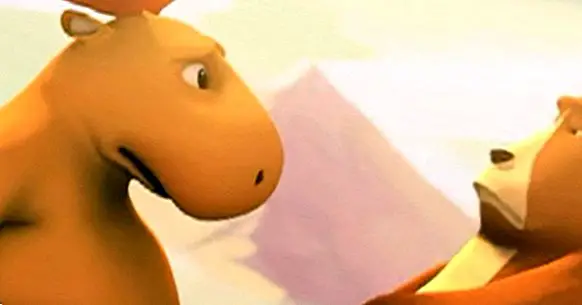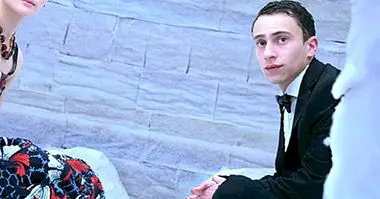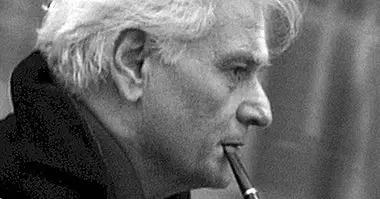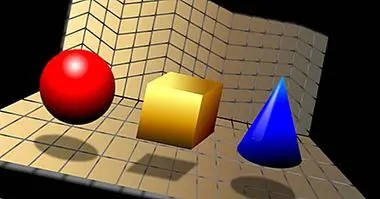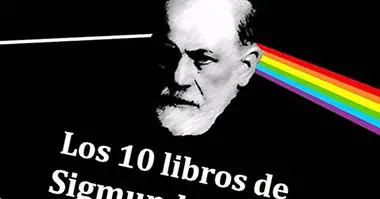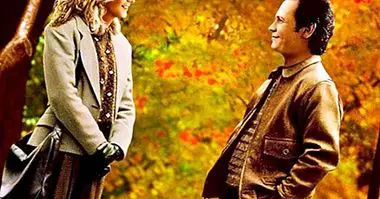Bridge: an animated short film about cooperation and conflict resolution
Bridge is a fun short animation that presents four characters that try to cross a bridge. Due to its characteristics, something apparently simple will become a problem. The fear of losing an apparent "privilege" leads the individual to fight tooth and nail and to forget the work side by side.
This short shows us the advantages of cooperation and the disadvantages of individualism when solving problems.
- Related article: "Piper: an endearing short on the ability to overcome"
A short film that talks about cooperation
This week, the team of the Institute of Psychological and Psychological Assistance Mensalus shares with you all «Bridge», a fun and illustrative short animation on a key element in the resolution of conflicts: cooperation.
But first of all, you can visualize the short film in the video shown below :
What does the short show us?
To talk about conflict resolution «Bridge» highlights the obstacles generated by confrontation and the advantages offered by cooperation. Something that at first glance seems simple, ingredients like pride are responsible for making it very difficult.
How can we manage pride?
For example, connecting again with the objective. Pride diverts the thought towards oneself instead of remaining attentive to the totality of the here and now: the you, the self and the context. The fear of losing an apparent "privilege" leads the individual to fight tooth and nail, and to forget the work side by side.
The result is a clear loss of effectiveness and a huge loss of life. Identifying those beliefs that place us on alert and demand to defend ourselves from something that is not a real attack, is the first step to reconnect with the goal.
In parallel, we can not forget to put ourselves in the place of the other (a position that, sometimes, is closer than it seems). Pride disconnects us from the person in front of us.
What more do we need for cooperation to exist?
Often in a conflict there are positions or points of view that work from competition instead of coordination.
Notice, the definition of "coordinate" responds to the act of gathering means and efforts for a common action. Cooperation seeks precisely to act by gathering these efforts based on recognition. This is the only way to find a place for both and thus be able to "cross the bridge together".
From Psychotherapy and skills training workshops, we put on the table strategies that speed up this recognition. One way to do this is to analyze the situation from a spectator role.
And how do you work this spectator role?
Through dynamics that allow physical and emotional distance to be taken. Exercises that graphically show the relationships between the members of the conflict is a good strategy. An example is the representations with figures (animals).
In them, the therapist formulates key questions that show the functioning of the protagonists. The objective is to promote empathy (I can better understand the position of the other) and formulate an expanded discourse on the reality of the moment (until then the discomfort ignored a part).
With all this information, the next step is to accompany the individual towards reflection, formulating new options and action. The range of proposals make the person more flexible and able to recognize the different faces of the problem.
What else do we take into account when analyzing all the faces of the problem?
As constructivist therapists we understand the person as a researcher of his own life. Reality is not a clear concept, each one of us builds his vision of the world based on personal constructs (based on his own belief system and life experiences).
For this reason, from our intervention we will help the patient to know how to construct reality and if this construction is functional.
And what steps will we follow to discover it?
According to Kelly, there is a cycle of experience that is constantly repeated in our social relationships. This cycle consists of five steps: anticipation, involvement, meeting, confirmation or disconfirmation and review. When we talk about analyzing the "faces of the problem" we refer, in part, to review how the person lives each of these phases. In this way we can detect where difficulties appear and propose concrete alternatives (eg, "in this case, what kind of anticipatory thinking would have brought me closer to my goal instead of moving away?")
Following the analysis, there are different exercises that show the mental processes that hinder the resolution of conflicts (processes characterized by the repetition of negative thoughts about oneself and others). This type of therapeutic work increases the awareness of the appearance of destructive thoughts, reduces the automatism of them and improves the capacity for self-control.
When we are on a shared bridge where it is difficult to walk, perhaps it is time to consider how to reach out to others so that we can cross each other.

